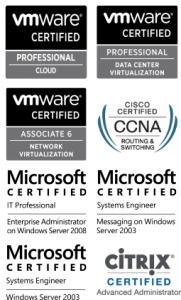Scenario
You’ve configured a Failover Cluster using Server 2008 R2, and now you want to install SQL Server 2008 R2.
Solution
Changes
A few changes were made to the simple Failover Cluster that was previously configured:
- Several LUNs were added to the FreeNAS VM so separate disks could be used for each function:

- 3 x Network Interface Cards (NICs) were configured on each node, each on a different subnet:
- LAN: 10.10.10.0/24
- SAN: 10.10.20.0/24
- Heartbeat: 10.10.30.0/24
- The FreeNAS interface was configured on the SAN subnet (10.10.20.220).
This time round, the Failover Cluster Validation Report didn’t have a single warning; all green ticks 😉


